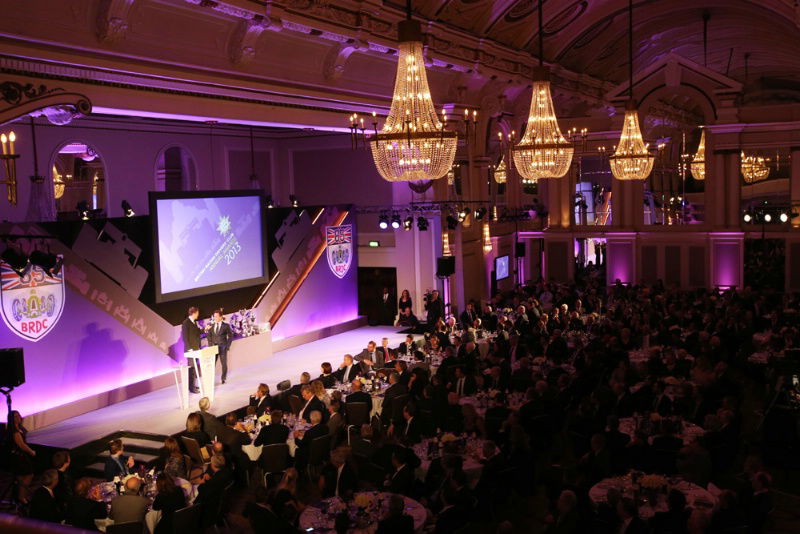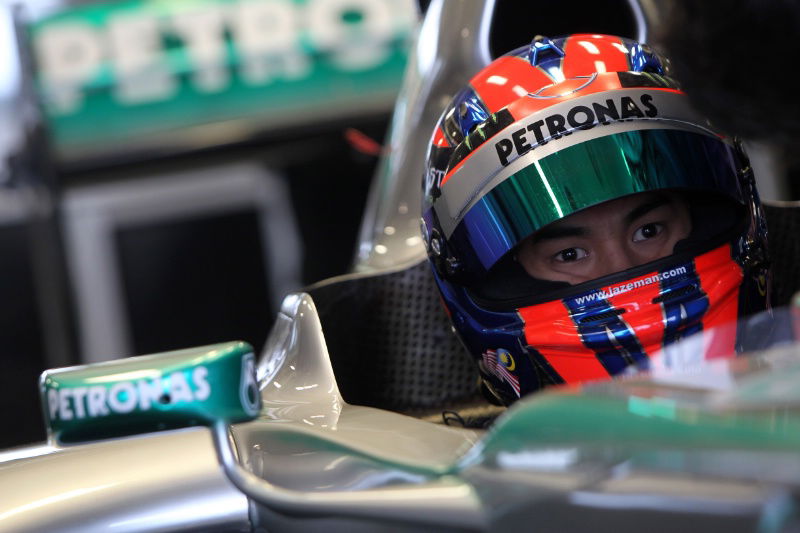Six of the Best: Possible future F1 circuits

With the latest version of the 2014 F1 calendar circulated in Austin showing only 19 races, it seems that there's still a surprising degree of flux surrounding the confirmation of next season's schedule.
Considering the continued propensity for change, Crash.net bangs the drum for six of the best international circuits to have neither hosted a Grand Prix nor played regular host to an established international-class event, destinations that would be potential firm fan favourite additions to the 2014 roster and beyond.
1. Aut?dromo Internacional do Algarve, Portugal
F1 has been absent from Portugal since 1996, when Estoril, the Portuguese Grand Prix's home for 12 years, fell off the calendar after promised renovations failed to materialise.
There is though a ready-made replacement nestling on the south coast of the Algarve, with the Aut?dromo Internacional do Algarve, built at a cost of $250 million in 2008, looming on the horizon as an increasingly viable drop-in solution to F1's scheduling issues.
A wide, undulating, 2.9 mile loop encompassing 18 flowing corners and two long straights, the Park Algarve complex best resembles F1's newest universally popular purpose-built addition, Austin's Circuit of the Americas.
With a three-lane motorway servicing the circuit, and Faro airport just 45 minutes away from the track, not to mention the 80,000 capacity grandstands and ample spectator facilities, the Algarve complex is perfectly equipped to host F1 in the immediate future.
Equally importantly, the circuit has the credentials to offer exciting racing, as opposed to some of the bland Tilkedromes constructed in the past few years. Endorsed by Max Mosley, the circuit also has glowing testimonials from drivers across the GP2, A1GP, World Series by Renault, GT Championship and Superbike World Championship races that have taken place at the track since 2009.
With the Algarve International Circuit well established as a top-class motorsport destination, the circuit's ambitious owners are looking to broaden their horizons - and have F1 firmly in their crosshairs. The Algarve coast is a winning holiday destination year-round, so what price a sunny jaunt to southernmost Europe for the F1 circus in the near future?
2. Guia Circuit, Macau
One of the world's most iconic motor racing destinations, the Guia Circuit in Macau has long been renowned as a street circuit challenge comparable only to Monaco in terms of difficulty, prestige and glamour.
Macau is a Special Administrative Region of China, a tiny coastal peninsula built to prosper on its gambling and tourism heritage, a little sister to the urban jungle behemoth of Hong Kong up the coast.
Its automotive racing heritage stretches back almost 60 years, and every November the Macau Grand Prix, encompassing all forms of motorsport across two wheels and four, descends upon the tiny peninsula for a fiesta of racing around the narrow, twisting, skyscraper-backed 19 turn 3.8 mile circuit.
The highlight of the Grand Prix is invariably the Formula Three race, a classic proving ground that has been the launch pad for careers including those of Ayrton Senna and Michael Schumacher.
Described by most recent winner Antonio Felix da Costa as 'the most challenging and demanding' racetrack in the world, Macau's Guia Circuit is a highly dangerous, thrillingly difficult test, guaranteeing action, thrills and spills at every turn.
While the circuit in its current form would not meet the safety requirements for F1, Macau is certainly wealthy enough to fund the necessary improvements should there be a demand to add yet another glittering cityscape to Grand Prix racing's international canvas.
3. Laguna Seca, USA
F1's misadventures at Indianapolis demonstrated that there's an inherent danger in applying the broad brushstroke of F1 racing to classic established American circuits, but Laguna Seca's iconic undulating curves look to be tailor made for the sport.
The continued efforts to establish a second American Grand Prix in New Jersey demonstrate the appetite for further Stateside ventures, and Laguna Seca's location on the picturesque California coastline at Monterey, between Los Angeles and San Francisco, would serve as a perfect point for a westward expansion in the US.
Opened in 1957, Laguna Seca is one of the world's shortest purpose-built premium racing facilities, its 11 corners encompassing only 2.2 miles, yet also featuring a dramatic 55m elevation change - most notably around the daunting Corkscrew series of swooping turns.
As host to CART races, the American Le Mans series and Moto GP, Laguna Seca has a proud tradition of international motorsport, and has even played host to F1 cars on demonstration runs as recently as 2012, when Marc Gene set an all-time lap record in a Ferrari.
The circuit has flirted with F1 in the past, narrowly losing out to Phoenix in the hunt for a new habitat following the late-80s collapse of the Detroit Grand Prix. The prevailing thought at the time was that Laguna Seca was too short and remote for F1, but the dismal failure of the Phoenix event demonstrated the retrospective folly of this decision.
F1 has been absent from California since the 1983 Long Beach Grand Prix, and with the tentative recent progress towards re-establishing the US as a cornerstone of the calendar, the time may well be ripe for a return to the Golden State.
4. Mugello Circuit, Italy
In 2014 F1 will return to Austria at the newly-monikered Red Bull Ring, but does this embrace of team-owned subjectivity potentially pave the way for a future race at the 'Autodromo di Ferrari', Mugello?
The unofficial 'home' circuit of Ferrari, Mugello is owned by and has held a long association with the Scuderia, but in the post-testing era the 'home' bias of the circuit towards the scarlet cars has been negated.
Nestling in rolling Tuscany, just north of Florence and within easy driving distance of Milan, Monza and Ferrari's Maranello homestead, Mugello is a 15 turn, 3.2 mile circuit that is reminiscent of Silverstone in the configuration of its high-speed curves, but also boasts an almost mile-long start-finish straight, offering a constant sensation of face-melting speed.
An in-season F1 test at Mugello in 2012 showcased the merits of the circuit to the wider paddock, and the track was showered with almost unanimous praise. World Champion Sebastian Vettel stated, "it's unfortunate we don't have this track on the calendar. It's an incredible circuit with lots of high-speed corners", illustrating the high esteem in which Mugello was regarded by the F1 fraternity.
The circuit already plays host to rounds of the DTM and Moto GP championships, demonstrating the requisite international event hosting and safety credentials required to substantiate Grand Prix racing.
For many years, Italy supported both the San Marino GP at Imola and the Italian race at Monza, and the passionate fervour of the Tifosi would certainly substantiate the return of a second F1 round in the country. It may not fit with Bernie's model of global expansion, but Mugello is a proven ready-made fan and driver-favourite racetrack in one of F1's spiritual backyards.
5. Phillip Island Grand Prix Circuit, Australia
Another old-school circuit with a cavalier attitude to such modern considerations as safety, run-off areas and access, the Phillip Island Grand Prix Circuit is a stunningly picturesque ocean-laden backdrop to a potential future F1 race.
Nestling on the tiny Phillip Island, on the outer perimeter of the Bass Strait some 90 miles south of Melbourne, the Phillip Island Grand Prix Circuit is the modern incarnation of 60 years of racing heritage in one of motorsport's most unlikely destinations.
Completely redeveloped as recently as 2006, the circuit now features the obligatory 5 star hotel and resort, as well as an 18 hole Greg Norman-designed golf course. Year-round, the track plays host to races across all categories from V8 Supercars and Formula 3, to Moto GP and GT Sports Cars, what Phillip Island may lack in traditional infrastructure it certainly makes up for in petrol-head-pleasing thrills.
Its 12 turns encapsulate multiple challenges and unique ocean-backed scenery along its winding cliff-top curves. At only 2.8 miles, the circuit is comparable in length to Montreal's Circuit Gilles Villleneuve; short by contemporary F1 standards, but not dangerously or unreasonably so.
Australia may never be the type of racing haven that could substantiate a second Grand Prix race, lacking the expansionist marketing credentials to stake a worthy claim for another entry on the calendar, but should Melbourne ever fall foul of F1's organisers as Adelaide once did, Phillip Island offers a potentially thrilling ready-made alternative.
6. Arctic Circle Raceway, Norway
A fanciful suggestion, Norway's Arctic Circle Raceway is the world's most northerly full-time purpose-built racetrack. With Grands Prix now scheduled the world over in varying degrees of dusk and darkness, the Arctic Circle Raceway offers a message in-keeping with F1's new push towards green efficiency: 24 hour daylight racing throughout the summer due to its unique longitudinal complexion.
The circuit opened in 1995, and has played host to racing across multiple series and formats in its 18-year lifespan. Built on the site of an old quarry, the Arctic Circle Raceway is comprised of unique asphalt, developed to counteract the enforced snow-covered inactivity of the harsh north-Norwegian winter.
The circuit is stationed midway between Tromso and Trondheim on the fjord-laden west coast of Norway, several hours drive from the capital, Oslo. Despite being the largest permanent racetrack in the country, it has the Hermann Tilke-designed Rudskogen Motorpark ahead of it in the very speculative running to host bring F1 back to Scandinavia after a 35-year absence.
Norway has never reared a Grand Prix driver, and without substantial local interest of investment the chances of F1 ever visiting the Arctic Circle Raceway are as remote as the circuit's location. However, with F1 ever-increasingly driven by an agenda for new markets and new exoticisms, who's to say that a midnight sun-kissed race at motorsport's most northerly destination wouldn't fit the bill for an innovative voyage of discovery?
Will Saunders@formulawill

